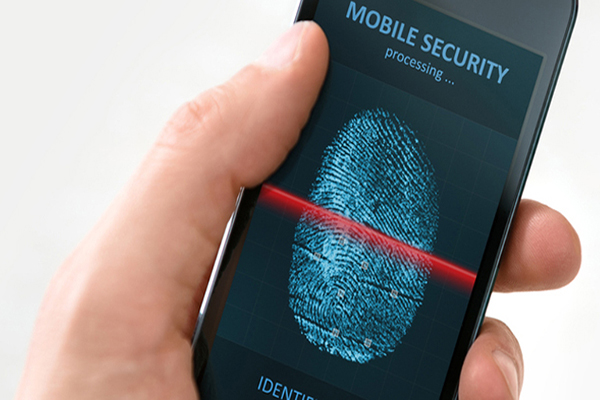Market Overview:
Mobile biometrics involve the use of biometric data, such as fingerprint, facial recognition, iris scans, and voice recognition, to provide secure access to mobile devices, applications, and services. These technologies offer a convenient and highly secure means of authentication.
Market Size and Growth:
The Mobile Biometric Market has witnessed substantial growth in recent years. With the increasing reliance on mobile devices and the growing need for robust security measures, the market is expected to continue expanding. The adoption of mobile biometrics is driven by both consumer demand for convenience and the need for stronger security measures to protect sensitive data.
Global mobile biometrics sales revenue totaled US$ 24.6 billion in 2021. Total market value is expected to increase from US$ 30.5 billion in 2022 to US$ 208 billion by 2032. From 2022 to 2032, global mobile biometrics demand is projected to rise at 21.2% CAGR.
Market Segmentations:
The Mobile Biometric Market can be segmented based on several factors:
| Biometric Modality | Fingerprint RecognitionFacial RecognitionIris RecognitionVoice RecognitionOthers |
| Authentication Type | Device UnlockMobile PaymentsApp AccessData Encryption |
| End-User | ConsumerEnterprise |
| Technology | HardwareSoftware |
Regional Analysis:
Regional factors influence the Mobile Biometric Market, with variations in adoption rates and regulations. North America, Europe, Asia-Pacific, and other regions may exhibit different growth patterns.
Key Players:
Key players in the Mobile Biometric Market include,
- 3M
- Apple Inc
- Aware Inc.
- BIO-key International
- HID Global Corporation
- M2SYS Technology
- NEC Corporation
- Nuance Communications
- Precise Biometrics AB
- Safran Inc
These companies lead the market through innovative solutions and continuous improvement in biometric authentication technologies.
Market Drivers & Restraints for the Mobile Biometric Market:
- Market Drivers:
Increased Security Concerns: Rising concerns over data breaches and identity theft are driving the adoption of mobile biometrics, as it offers a more secure method of authentication.
Mobile Payment Growth: The surge in mobile payment transactions requires robust authentication methods, stimulating the demand for biometric solutions like fingerprint and facial recognition.
Government Initiatives: Government-led programs, such as e-passports and national ID projects, are promoting the use of mobile biometrics for citizen authentication and border control.
User Convenience: Biometric authentication enhances user experience by simplifying login processes, reducing the need for passwords, and enabling quick access to devices and applications.
2. Market Restraints:
Privacy Concerns: Biometric data collection raises privacy worries, leading to regulatory challenges and hesitancy among users to share their personal information.
Cost and Integration Complexity: Implementing mobile biometrics can be expensive, and integrating biometric technology with existing systems can be complex and time-consuming.
Security Vulnerabilities: Despite their advantages, biometric systems are not entirely foolproof and can be vulnerable to spoofing or hacking, undermining their reliability.
Compatibility Issues: Not all mobile devices support the same biometric methods, creating interoperability issues and limiting widespread adoption.
Market Opportunities & Challenges for the Mobile Biometric Market:
- Market Opportunities:
Increased Security Demands: The growing need for robust security measures in various sectors, such as banking, healthcare, and government, presents a significant opportunity for the mobile biometric market. Mobile biometrics offer secure and convenient access control solutions.
Rising Mobile Payments: The increasing adoption of mobile payments and digital wallets creates a demand for biometric authentication methods like fingerprint and facial recognition. This provides an opportunity for mobile biometric technology to enhance transaction security.
IoT Integration: With the expanding Internet of Things (IoT) ecosystem, there is an opportunity for mobile biometrics to play a role in ensuring the security and integrity of IoT devices and networks.
Government Initiatives: Various governments worldwide are integrating biometric authentication in ID programs, immigration, and law enforcement. This creates a market opportunity for mobile biometric solutions to support these initiatives.
2. Challenges:
Privacy Concerns: Mobile biometrics raise privacy concerns, as user biometric data can be at risk if not properly secured, leading to regulatory challenges and consumer apprehension.
Technological Hurdles: Developing and implementing robust mobile biometric solutions can be technologically challenging and costly, particularly for smaller businesses.
Interoperability: Ensuring interoperability between different mobile devices, operating systems, and biometric authentication methods can be a significant challenge for the industry.
Cybersecurity Threats: The mobile biometric market faces constant threats from cybercriminals attempting to compromise biometric data. Ensuring cybersecurity is an ongoing challenge.
Market Trends & Latest Developments:
The mobile biometric market is witnessing several significant trends and developments. First, there is a growing demand for enhanced security and user authentication in mobile devices, driving the adoption of biometric technologies such as facial recognition, fingerprint scanning, and iris recognition. Second, the market is evolving to include more advanced AI-driven biometric solutions that offer improved accuracy and user experience. Additionally, the integration of biometrics into mobile payment systems is gaining momentum, enhancing the convenience of secure transactions. Lastly, concerns about data privacy and security are pushing for the development of decentralized and privacy-preserving biometric solutions.















